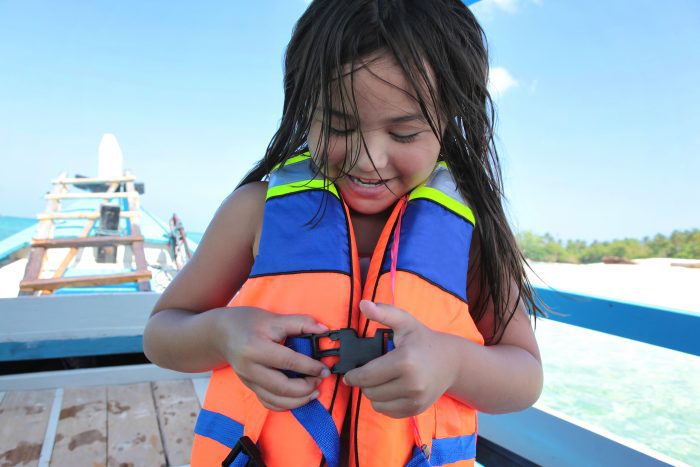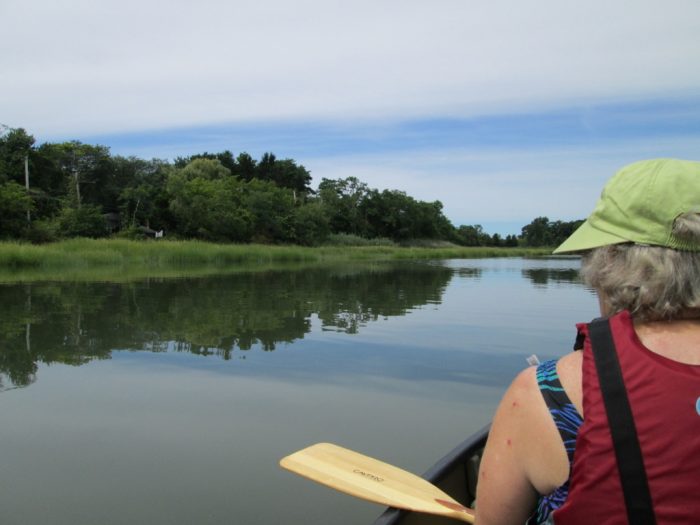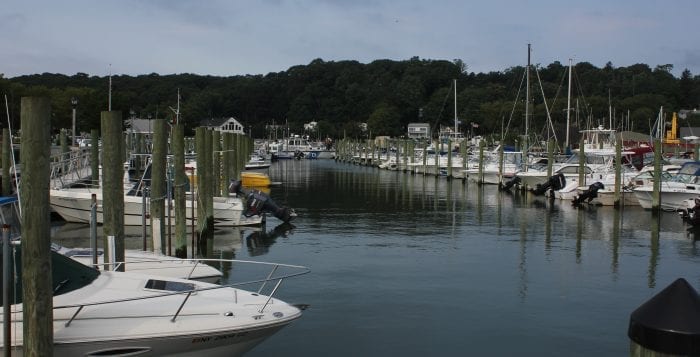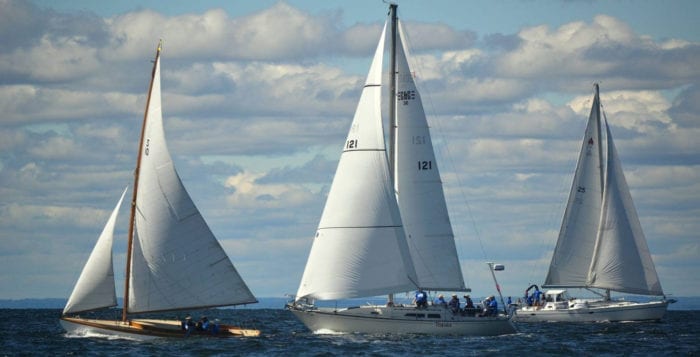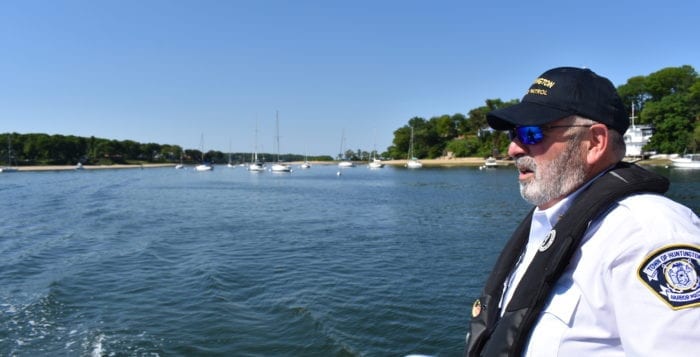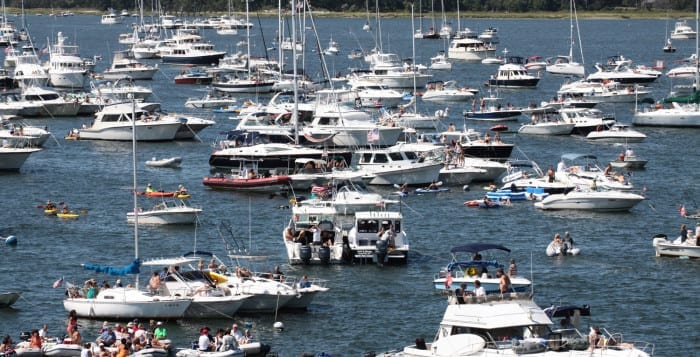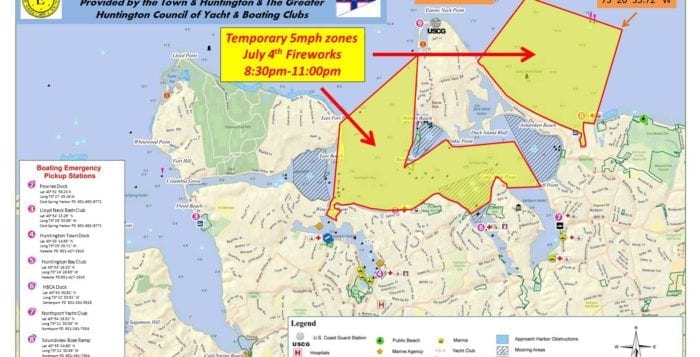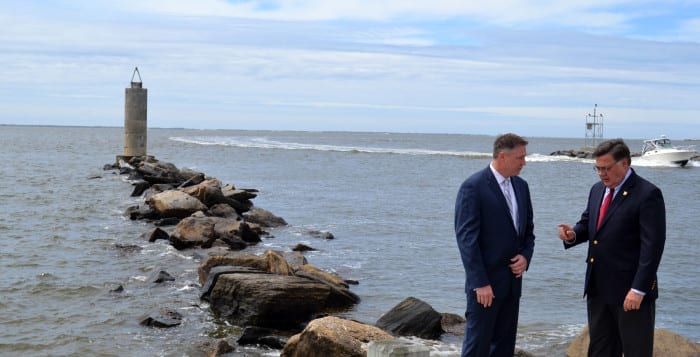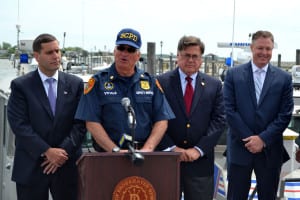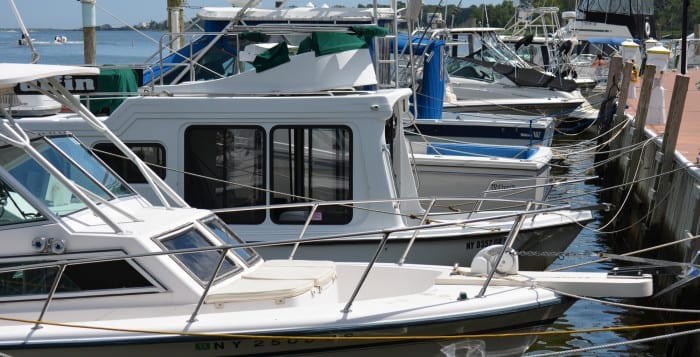By Beverly C. Tyler
In the June 24 edition of the various editions of the TBR News Media newspapers, editor and publisher Leah Dunaief wrote in her weekly column “Between You and Me” about a pleasant Sunday sail in Port Jefferson Harbor in her 16-foot Hobie Cat with her son and daughter-in-law. The sail ended in a capsizing when the wind provided a sudden unexpected gust. Dunaief wrote, “It took us several minutes to sort ourselves out … We worked to untangle ourselves as we clung to the side of one of the overturned pontoons. Then the boat became caught in a mooring into which the wind had blown us. We hoped one of the two boats that came along would stop to help. They passed us by, but one slowed down to take a video of us struggling in the water.”
Fortunately, sailors came by and Dunaief was able, with help, to climb up the boat’s swim ladder to safety. They also assisted in getting the catamaran righted and the two younger Dunaiefs sailed off just as a police boat and fire boat came by “checking to see if all was well. It seems some alert person in a waterfront home in Belle Terre, witnessed the mishap and called 911.” The boaters then took Dunaief home, as she noted, “a drenched dog.”
This incident, which may or may not have been reported and detailed by the police and thus included in the New York State 2021 Recreational Boating Report, ended on a positive note due to the help of these Good Samaritans, rather than the help of other boaters. This incident is a dramatic reminder to everyone who takes to the water that they need to be aware of their responsibility as members of the boating public.
“Rendering Assistance (Good Samaritan Law) — According to Section 41.3 of the Navigation Law: It shall be the duty of every master or pilot of any vessel to render such assistance as he can possibly give to any other vessel coming under his observation and being in distress on account of accident, collision or otherwise.
“If you come across another vessel that is in distress, the law requires you to assist them to the best of your abilities. You are excused from this duty if such assistance: endangers your own vessel — endangers your passengers — interferes with other rescue efforts or law enforcement — will cause further or more extensive damage. Even if you determine that there is a risk to your vessel and passengers you should stay at the scene until a competent rescue team comes on the scene and releases you … If you find that you must put someone in the water to assist another vessel or passenger make sure they are wearing a life jacket.”
In 2020, in the most recent compilation of boating statistics, there were 240 boating accidents reported in New York. Among those accidents there were 127 injuries and 31 fatalities, the highest New York has had since 2003. In Suffolk County in 2020, there were 56 accidents, 40 injuries and five fatalities. The use of a life jacket may have saved many of these victims. A collision between two or more vessels is still the most common type of boating accident and results in the most injuries. The two most common factors in boating collisions are operator inattention and operator inexperience. There is no single answer to reducing either fatalities or collisions, although a little common sense and consideration of other boaters would be a good start. Boating education classes help, but boaters must be willing to apply what they have learned. As detailed in the Recreational Boating Report, “With the continued phasing in of Brianna’s Law continuing in 2022 and ending in 2025 with all ages required to take a Safe Boating Course, we can bring these numbers back down with the hope that New York residents can continue to have a fun but safe experience on the water.”
Yes! The most important part of boating safety is to begin with a boating safety education course. This is especially true for our young people, since they are the future of boating and boating safety.
On an August Monday, my wife and I were canoeing in Little Bay, just west of Setauket Harbor. It was high tide and two high-speed motorboats appeared pulling water skiers. One of these boats, operated by a young man, had no observer on board to watch the skier, a violation of both the boating law and common sense.
The U.S. Coast Guard, Suffolk County Police Marine Division, U.S. Coast Guard Auxiliary and the United States Power Squadrons, also known as America’s Boating Club, have been working together in the areas of education and prevention to make recreational boating safe as well as enjoyable.
“One of the rules that boaters may not know,” commented Old Field Point Power Squadron Commander Ron Guzewich, “is that operation of a personal watercraft (PWC) is actually prohibited from sunset to sunrise. And there are other restrictions on the operation of personal watercraft as well. Personal watercraft comprise about 10% of the total registered vessels in New York, yet they are involved in a disproportionate share of accidents.”
Boating courses are available through the United States Power Squadrons — America’s Boating Club at: americasboatingclub.org/learn/online-boating-education/americas-boating-course. In addition, a listing of New York State boating courses may be accessed at nysparks.com/recreation/boating/education.aspx.
The New York State Parks and Recreation Department recommends “The Safe Skipper’s Pledge,” a version of which is recommended by every boating organization. It reads:
• I will assist those in need and report any boating accident in which I’m involved.
• My boat will have USCG approved life jackets, of the proper size, in good condition and readily accessible.
• I will operate in a safe and careful manner, never recklessly, and never while under the influence.
• I will understand and follow the Rules of the Road.
• I will take a boating safety course.
• I will carry the proper equipment while underway, always in good condition and always readily accessible.
• Navigation aids serve as the road signs of the water. I will understand and obey them.
• I will understand and follow the legal requirements for operating a personal watercraft.
• I will remember to follow the rules of safe boating, whether I am pulling skiers or tubers, skin diving, fishing or hunting.
• If my boat has a motor, I will register it with the Department of Motor Vehicles.”
As I wish to end this article on a positive note, I’m including a report contained in the Recreational Boating Report from May 2010. “Long Island Man Recognized for Rescue — A National Association of State Boating Law Administrators Award of Commendation is going to a New York man, Scott Stokkers, of Huntington, for his bravery and selflessness in saving three young lives on Long Island Sound last summer. On the evening of August 14, 2009, Stokkers responded to cries for help from three young boaters whose 10-foot boat took on water and sank in the dark waters of Makamah Beach. Without life jackets, the three young boaters were unable to swim the nearly half mile to shore due to exhaustion. Stokkers carefully approach the panicked boaters, getting them aboard his canoe and safely ashore.”
This commendation also notes the number one cause of boating fatalities in New York State, the lack of a required life preserver, also called PFD, personal flotation device. These boys were lucky for more than one reason.
The Recreational Boating Report notes, “What causes recreational boating accidents fatalities on the water in New York? The obvious answer on the leading type of boating deaths is drowning. During the period 2005 – 2020, 82% of all victims were not wearing a PFD. It is impossible to tell how many people have been saved by wearing a PFD, but the potential consequences of not wearing one are clear.
Improvements in PFDs have made them far more comfortable to wear. Specific PFDs have been developed to maximize safety for specific on water activities such as wake boarding and personal watercraft operation, as well as a new labeling system rolling out on future PFD’s making it easier for users to know the effectiveness of the PFD’s being used.”
It is up to everyone who enjoys boating on the waters surrounding Long Island and, on our lakes, bays and rivers to practice safe boating. We can all have enjoyable experiences on the water if we are knowledgeable, prepared and aware of what is going on around us.
Past Commander Beverly Tyler is currently chaplain and historian for the Old Field Point Power Squadron with the rank of Senior Navigator, having completed every course of study and practical application of safe boating operation, coastwise and celestial navigation in the United States Power Squadrons — America’s Boating Club.

